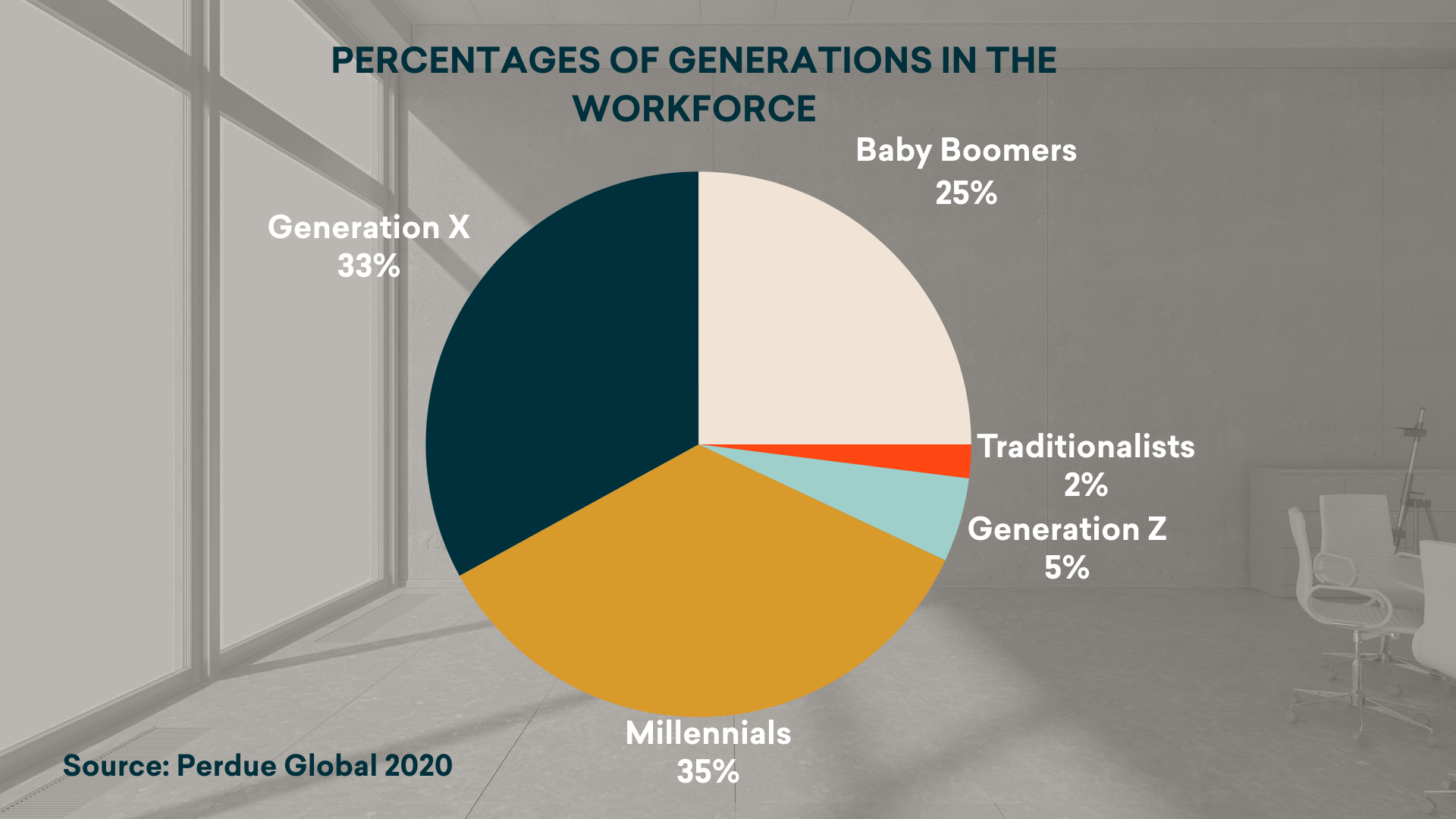Bridging the Great Generational Workforce Divide
It’s no secret that the workforce experiences growing pains. While these pains can be due to shifting trends or new technology, one of the number one pains the workforce is currently experiencing is, quite literally, its rapid growth of the working-age population. For the first time in modern history, there are now five generations converging in the workforce. From its dwindling percentage of younger Traditionalists (1925-1945) pushing later retirements to the elder Generation Z (1997-2012) members establishing themselves in the workforce for the first time, and three dominating generations in-between, workplaces are seeing new multigenerational age dynamics to navigate at once.
Naturally, with broadened age differences comes generational and value divisions, often fueling miscommunication or mismanagement. Through understanding each other’s generational values in the workplace, we can begin to close unproductive gaps and build long-term resilience. Each generation brings their own lived experiences and circumstances of the zeitgeist they were raised within. These experiences can manifest in preferred workstyles, work environments, managerial relationships, general workplace communication, and more.
With the full range of age demographics present in the workforce, organizations may start to observe employees of older generations, such as Traditionalists & Baby Boomers, who value loyalty and discipline in more structured environments; Gen X-ers who value efficiency and a work-life balance mindset; and, younger generations like Millennials & Gen Z-ers who feel most comfortable in flexible workplaces with a focus in culture and inclusivity.
Cross-managing a collective of varying ages can seem daunting, particularly within organizations where you may have multiple different generational perspectives working towards a common goal or mission. What it really comes down to is intentional listening, engaging, and an openness to meet everyone where they are at. Here are three things to think about when assessing your multigenerational needs:
1. Flexible work arrangements
2. Inclusive workplaces design
3. Facilitated multigenerational collaboration
Most importantly, when we apply this work from a DEIB viewpoint, we first have to dispel age-based stereotypes and generalizations that can affect the way we manage and interact. In these instances, it is crucial to leverage common ground amongst your employees. There are meaningful ways of doing this such as sharing strengths and passions, lifting up everyone’s ability and goals, and embracing the intersectionality present in the workplace.
In a recent survey by AARP Learning Collective, it was reported that 83% of global executives recognize a multigenerational workforce is key to business growth and success, yet 59% do not include age in a DEIB policy. An age-diverse workforce is power, and employers have an important role to play in supporting workers of all ages and life stages.
There is still work to be done to maximize the potential of age diversity in the workforce as it changes and evolves, but workers of the 21st century are optimistic about the future. Reported in a 2023 survey by LiveCareer, 59% of employees consider generational diversity in the workplace as a positive element of work. As we look to the future of supporting age-diverse organizations, there are a few steps we can take to enable its long-term resilience:
Create sustainable multigenerational work environments that nurture growth
Engage mutual respect, skill sharing, and communication
Catalyze creativity grounded in your team’s diverse experiences




